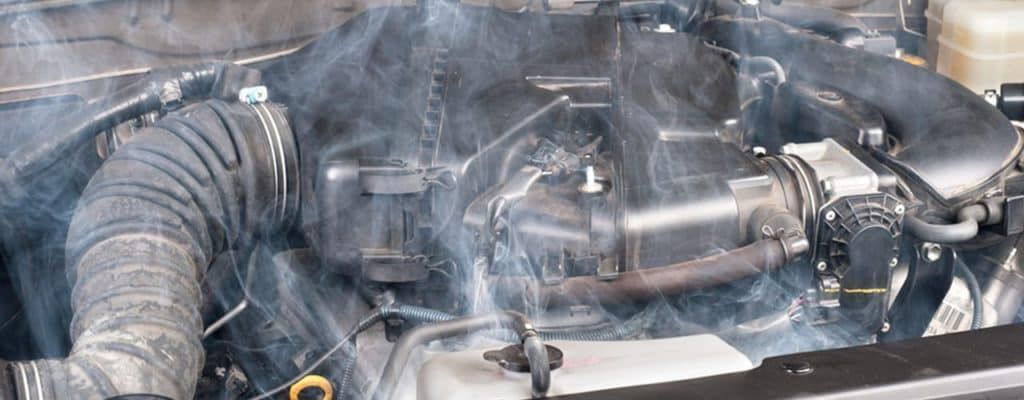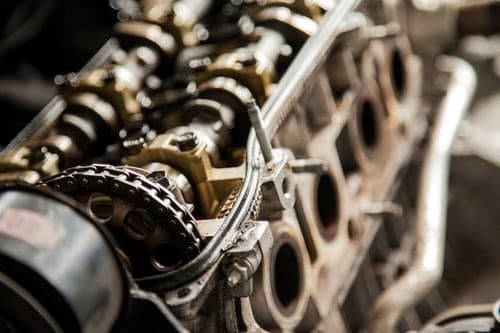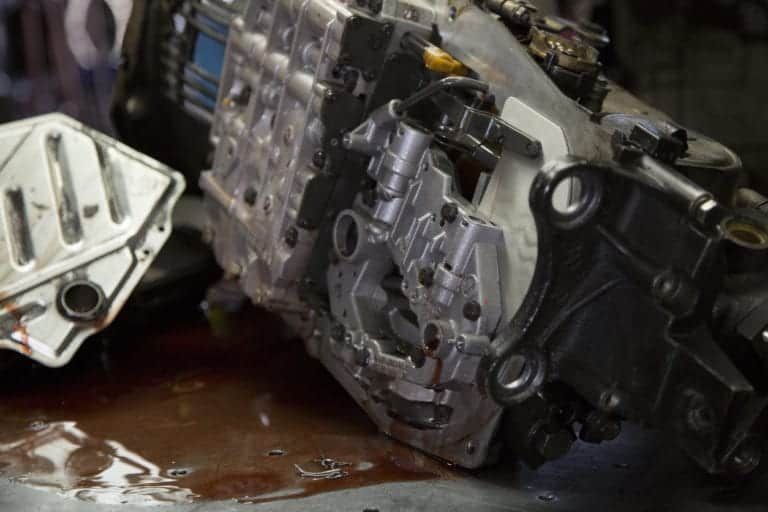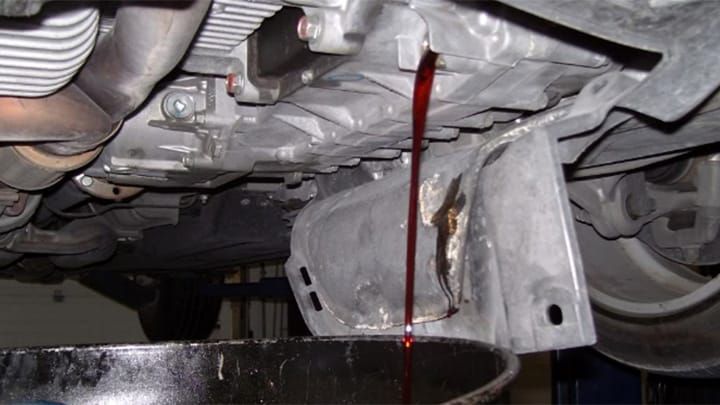Transmission Overheating: Symptoms, Causes, and Prevention
Transmission overheating isn’t new. But you shouldn’t take it lightly. Remember, most of the transmission problems occur due to a single reason; overheating.
And if you ignore it, it could result in costly repair work in the future. When your transmission overheats, it acts as a silent killer and wreaks havoc whenever you engage a gear.
However, the good news is if you detect problems that cause overheating at the earliest, it can minimize the chances of expensive repairs.
But don’t worry. This blog covers essential information, such as signs, prevention, and causes to help keep your transmission in good shape.
Let’s get started.
Cool Down Your Car with Our Expert Tips On Transmission Overheating

Often, people wonder why their transmissions overheat. In the event that you do experience it, don’t panic and try to find reasons that may have contributed to it.
It is important to remember that transmission fluid does not burn. Your car’s lubrication system could be malfunctioning when it overheats.
However, the following reasons could also overheat your transmission:
- Plenty of stop-and-go traffic
- Vehicle towing, including getting stuck in the snow
- Hot weather
- Improper car maintenance
- A leak or break in transmission’s lubrication system
An older car, however, is more likely to cause your transmission to overheat. The cause might be hot weather or stop-and-go traffic if you experience it once.
But if it happens again, you need to opt for an expert to detect the cause, find a solution and keep it running easily.
Keep Your Transmission Cool and Avoid Failure By Overheating
Overheating is responsible for 90% of automatic transmission failures. Transmission fluid overwork is one of the primary causes of overheating. Temperatures between 175 and 220 degrees are optimal for transmission fluid.
Problems start when the temperature crosses 20 degrees, begin the varnish formation at 240 degrees, following seals hardening, seals and clutch burn out, plates slipping, carbon formation, and ultimately – failure.
Protect Your Vehicle From Overheating: Learn To Recognize the Signs and Solutions
Some factors heat your transmission. However, you can prevent it by keeping an eye on the following signs or symptoms.
Get Your Transmission Running Smoothly Again with Our Expert Advice
It is likely that your transmission will begin to overheat if your fluid levels drop. It occurs when your transmission lacks the fluid it needs to maintain an appropriate temperature.
Therefore, transmission fluid levels should be checked regularly. You may also notice delays when shifting gears when your fluid levels are low.
To put it simply, your transmission needs fluid to transfer pressure easily. Your transmission is at risk of overheating if it doesn’t have enough fluid to perform the necessary gear change.
When your transmission fluid ages, it starts to lose its ability to perform smooth shifting between the gears. It reacts the same when the fluid gets contaminated by debris.
Both cases result in slipping and overheating due to fluid degradation. Slipping can also be caused by problems with your clutch, worn internal gears, or faulty transmission bands.
Therefore, when you notice the signs of transmission slipping, it’s best to bring your vehicle to the repair shop at the earliest to prevent further damage.
Keep Your Transmission Running Smoothly with Expert Advice on Overheating and Burning Odors.
Hydraulic power is used to change gears in transmissions. A hydraulic system transmits force from one part of your car to another using liquid.
Transmission fluid enables the force to pass between the transmission parts. But its usage also includes providing lubrication to the system.
Furthermore, this fluid absorbs heat as it runs through the system, helping to regulate internal temperatures. Heat moves through the transmission fluid to the radiator, where it is absorbed by the coolant.
Transmission fluid loses its ability to perform essential functions as it ages. Oxidation causes the internal structure of the liquid to break down, making it incapable of absorbing heat and reducing friction.
And when the fluid degrades, it leads to overheating. On the other hand, fresh transmission fluid is red, but as it ages, it starts to get darker in color.
It burns and turns black at a certain point. This oxidation produces strong and unpleasant fumes that you can detect inside of the car. And such a harsh smell indicates that your transmission is overheating.
Defective Solenoid
Fluid passes through the transmission through a solenoid, an electrical component. The transmission won’t receive enough fluid if it doesn’t function properly.
This situation also contributes to transmission overheating. If you’ve got a defective solenoid, you need to replace it. In some cases, the circuitry can be a reason that causes it to act erratically.
Causes of Transmission Overheating
Here is what causes your transmission to overheat.
Heavy Towing
Remember, towing heavy loads makes your transmission work harder than usual. Heavy towing also means that you need to service your transmission more often.
Moreover, you need to check fluid levels and colors frequently and shouldn’t exceed load limits.
Stop and Go Traffic
There’s no denying that living in the city means dealing with lots of traffic and constantly stepping on the brakes and accelerator. These factors also make your transmission work harder than normal.
Weather Conditions
Hot weather also contributes to overheating your transmission by increasing the resting fluid temperature, making it warmer than usual.
Fluid Issues
Old transmission fluid or low fluid levels lead to friction between the parts and contribute to overheating. Fluid issues are also common causes for transmission overheating.
How to Prevent Transmission Overheating?
After exploring symptoms and causes of transmission overheating, here’s how you can prevent it.
When To Change Your Transmission Fluid
It’s recommended to change your transmission fluid every 30,000 to 60,000 miles. And it’s also one of the car maintenance tasks that you can do yourself.
And if you drive in severe conditions, such as hot climate, towing heavy loads, or lots of stop-and-go driving, you need to have it changed every 15,000 miles.
It’s even better to change transmission fluid according to your manufacturer’s recommended maintenance schedule.
Keep Your Transmission Cool and Efficient with Proper Maintenance
Cooling down the transmission is the job of your car’s radiator and cooling system. Therefore, they must also be maintained. A two-year coolant change is recommended.
Moreover, if you tow or haul heavy loads, you can opt for an external cooler. Many people struggle to find the best transmission coolers. If that’s the case with you, too, you can go for stack plate ones or the ones with built-in fans.
You can attach the cooler to the front of your car’s radiator.
Regularly checking the fluid is essential. I think it would be a better idea to do it monthly as well. Checking the fluid enables you to find the low fluid levels, burnt or dirty fluid.
Moreover, this practice helps you detect problems, find solutions and keep your transmission in good condition.
Apart from that, you need to look for stains on the driveway or fluid around the transmission’s part, as transmission fluid leaks lead to low levels that cause overheating.
Things to Do When a Transmission Over Heats
When noticing transmission overheating, do the following:
- Stop your car and allow it to cool down.
- Focus on if your vehicle is making any noise.
- Once your car cools down, start back up and continue on your way.
However, if the temperature rises again, try lowering the load on your vehicle or look for a tow truck to bring your car to a local transmission repair facility.
How Automatic Transmission Fluid Cools a Transmission
Automatic transmission fluid contains chemical additives that provide the required pressure and lubrication to change the gears. However, its primary function is to remove heat.
The spinning gears, whirring turbines, and expanding springs generate friction as they move, producing a lot of heat.
This heat leads to stress fractures, varnishing, and other forms of damage to the internal components if you don’t deal with it quickly. The automatic transmission fluid is formulated to absorb the heat as it flows through the moving parts.
It carries the heat out of the transmission to the radiator, where the hot fluid runs through a special cooling chamber that uses aluminum fins to remove heat from the automatic transmission fluid.
As the air flows through the radiator, the heat dissolves, and cooled fluid returns to the transmission for another round.
If it doesn’t remove or expel heat through the factory transmission cooler fast enough, the transmission will overheat, and damage will occur.
Frequently Asked Questions (FAQs)
- How do you fix an overheating transmission?
When your transmission overheats, you need to stop driving and let it cool down, make a note of what’s happening or notice any noise, and once your transmission cools down, start it again and continue on your way.
- What happens if my transmission overheats?
A transmission that frequently overheats leads to fluid leak from the transmission, so if you’re constantly replacing the fluid, it could lead to a leak. A slipping transmission also indicates low, dirty, or burnt transmission fluid. You also need to stay aware of the check engine light.
- How do I cool down my transmission?
You can cool down your transmission by installing external coolers. They prove to be effective in cooling your transmission and keeping it at a regulated temperature, which helps prevent damage. External coolers also help reduce transmission friction, which is another cause of the damage.
- Can you drive a hot transmission?
If you hit 220 degrees, you can expect to get half the normal life out of your transmission. It lasts about ¼ the time it should be at 240 degrees. When it reaches 260 degrees, you’re down to 1/8 of the normal life. When you have hot transmission, it gives off an odor.
- Can adding too much transmission fluid cause overheating?
Incorporating too much fluid will lead to high pressure inside of your transmission. If there’s too much fluid in your transmission, the chances are that it will overheat as air won’t enter to cool down the system.
- Will a dirty transmission filter cause overheating?
A dirty engine air filter can contribute to overheating. If your car’s engine air filter is clogged or dirty, chances are less oxygen will enter the combustion chamber.
Why Choose Us
Transmission overheating is one of the common car problems. However, when you create a proper maintenance schedule, you can detect issues that lead to overheating at the earliest.
There are a few ways to prevent your transmission from overheating, such as changing the fluid, installing an external cooler, etc. If your transmission overheats once in a while, it could be due to the hot weather. However, if it happens often, you need to consult with a repair facility without wasting further time.
To make sure your transmission is cared for properly, let Eagle Transmission & Automotive service your car. We have over 30 years of experience working on all vehicles in a wide variety of makes and models. Our quality repair and maintenance services are second to none, so give us a call today!
The post Transmission Overheating: Symptoms, Causes, and Prevention appeared first on Eagle Transmission.





